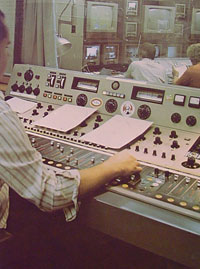Electronic Miracle
written by smashing
 On 30 September, 1929, the world’s first television broadcast took place. It was an experimental transmission by the BBC, and it lasted for only two minutes. There was no sound, which was broadcast later, but John Logie Baird, the inventor, was very pleased to know that at last, a real television transmission had taken place – even though only 29 television receivers were in existence. A crude, 30-line experimental system was used for tests three years later, but in 1936, television broadcasting began in earnest. The BBC, using a 405-line system, had begun regular transmissions. But there were still only about 400 receivers, and even they had to be used within 30 miles of the transmitter.
On 30 September, 1929, the world’s first television broadcast took place. It was an experimental transmission by the BBC, and it lasted for only two minutes. There was no sound, which was broadcast later, but John Logie Baird, the inventor, was very pleased to know that at last, a real television transmission had taken place – even though only 29 television receivers were in existence. A crude, 30-line experimental system was used for tests three years later, but in 1936, television broadcasting began in earnest. The BBC, using a 405-line system, had begun regular transmissions. But there were still only about 400 receivers, and even they had to be used within 30 miles of the transmitter.
Today, television has become part of the lives of people the world over. In Britain alone, the average television set is turned on for more than five hours each day.
It is a miracle of electronic engineering, invented by a series of men over a period of almost a hundred years. A century ago, there was no television, no radio. Although the art of photography was in its early stages, there was no cinema, although the telephone and the talking machine had just appeared on the scene. The transformation of that scene in one hundred years has been truly miraculous. And what of the future? How will television develop? It seems likely that the television of the future will probably be piped by cable into our homes. It will probably have a very large screen, and we shall almost certainly posess our own video-tape machine for showing programmes at will.
These words come from the introduction to a book called ‘See Inside a Television Studio’ by George Beal and R. J. Unstead. Written in 1977, this book, more than any other, was the inspiration for me to work in television.
I just received an old copy of it, after my original was regretfully destroyed in a flood a few years back. Flipping through it again was a step back in time for me, and filled me with the same hopes, dreams and aspirations, as it did 30 years ago.
This book is long since out of print, but hopefully the authors will somehow find this, and consider getting in touch. I would love to post more content from the book, and perhaps even scan in some of the superb illustrations, sketched by artists John Berry and John Marshall. So transformative for me was this book, I believe it could have the same effect, even now, on current broadcasting students, and historians of TV.
I would like to add the book to the archives of the WorldTV University, a free and open repository of educational content and self-study courses, for anyone wishing to learn more about the process of creating television.